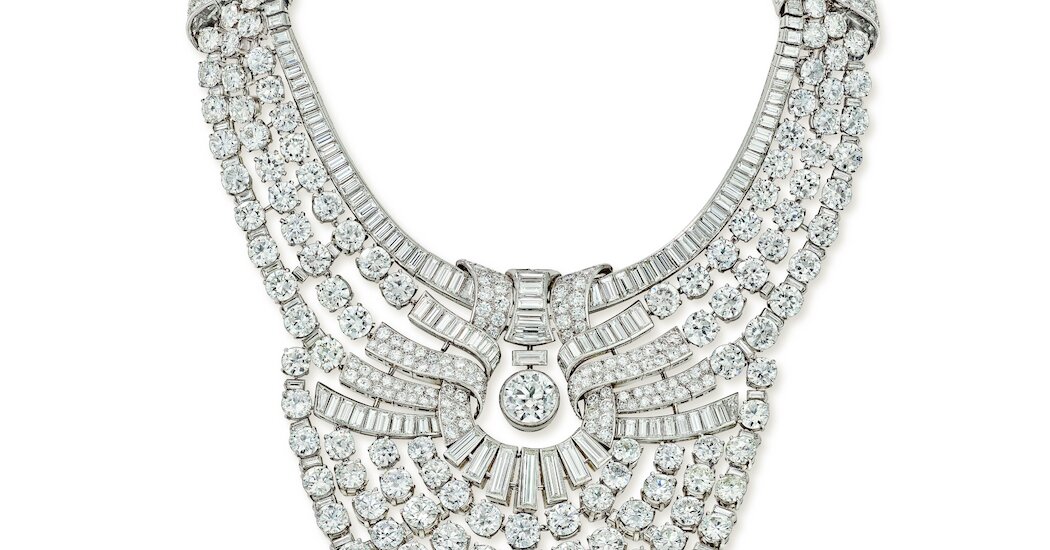High-end jewelry houses traditionally use Couture Week as a time to showcase their latest creations to some of the world’s wealthiest clients. This week, however, Van Cleef & Arpels chose the opposite direction and traveled back in time.
For four days, the jeweler of Place Vendôme transformed the salons of the 18th century Hôtel de Mercy-Argenteau, the jewelery school of Place Vendôme recently renovated outbuilding, to a display case for about 70 pieces from the own collection. (The house’s patrimony department, which began reacquiring a number of special creations in the 1970s, now contains more than 2,700 pieces.) The stunning display case was open to couture clients and the press by appointment only.
The exhibition was designed to resemble the pages of a new book, “The Van Cleef & Arpels Collection (1906-1953).” It is the first of two volumes to be published by French art book specialist Atelier EXB and contains images of 680 jewels, watches and other precious objects, as well as some archival documents.
Alexandrine Maviel-Sonet, the house’s director of patrimony and exhibitions, said her team spent more than three years researching and compiled the book as a catalog raisonné, a term for a comprehensive, annotated list of an artist’s work.
“The idea was to present a collection that is important,” she said. “As artists, we try to show that our jewelry is works of art: they are part of the decorative arts, but also of art in general.”
Key designs from the house’s earliest creative flourishes were on display, including a smooth, diamond-covered link bracelet with three imposing emerald cabochons, and an articulated cuff bracelet with roses in diamonds, rubies, emeralds and onyx. Both pieces were also presented almost a century ago at the 1925 International Exhibition of Modern Decorative and Industrial Arts in Paris, where Van Cleef & Arpels received the top prize for jewelry.
The house’s signature motifs were also represented, including ballerinas with gem-encrusted skirts and birds with emerald green cabochon bellies, as well as flowers paved with gemstones in the Mystery Set technique. This method of setting gemstones, which makes the metal framework invisible, was invented and patented by the house in 1933.
The show included a number of royal commissions, such as a platinum and diamond necklace worn in 1939 by Queen Nazli of Egypt, the Queen Mother. The creation – a large piece in the shape of a bib chain – was included in a chapter on the jeweler’s overseas expansion, particularly into New York, from the late 1930s.
Ms Maviel-Sonet said the deep dives into the house’s history had led to some surprises, including information about how the house’s artisans used diamonds to mimic shagreen, a natural skin, often from a shark or stingray, that was very popular in the art world. Deco period. However, those details will be saved for the next volume, which will cover the second half of the 20th century. It is scheduled for 2026 and coincides with the jeweler’s 120th anniversary.





